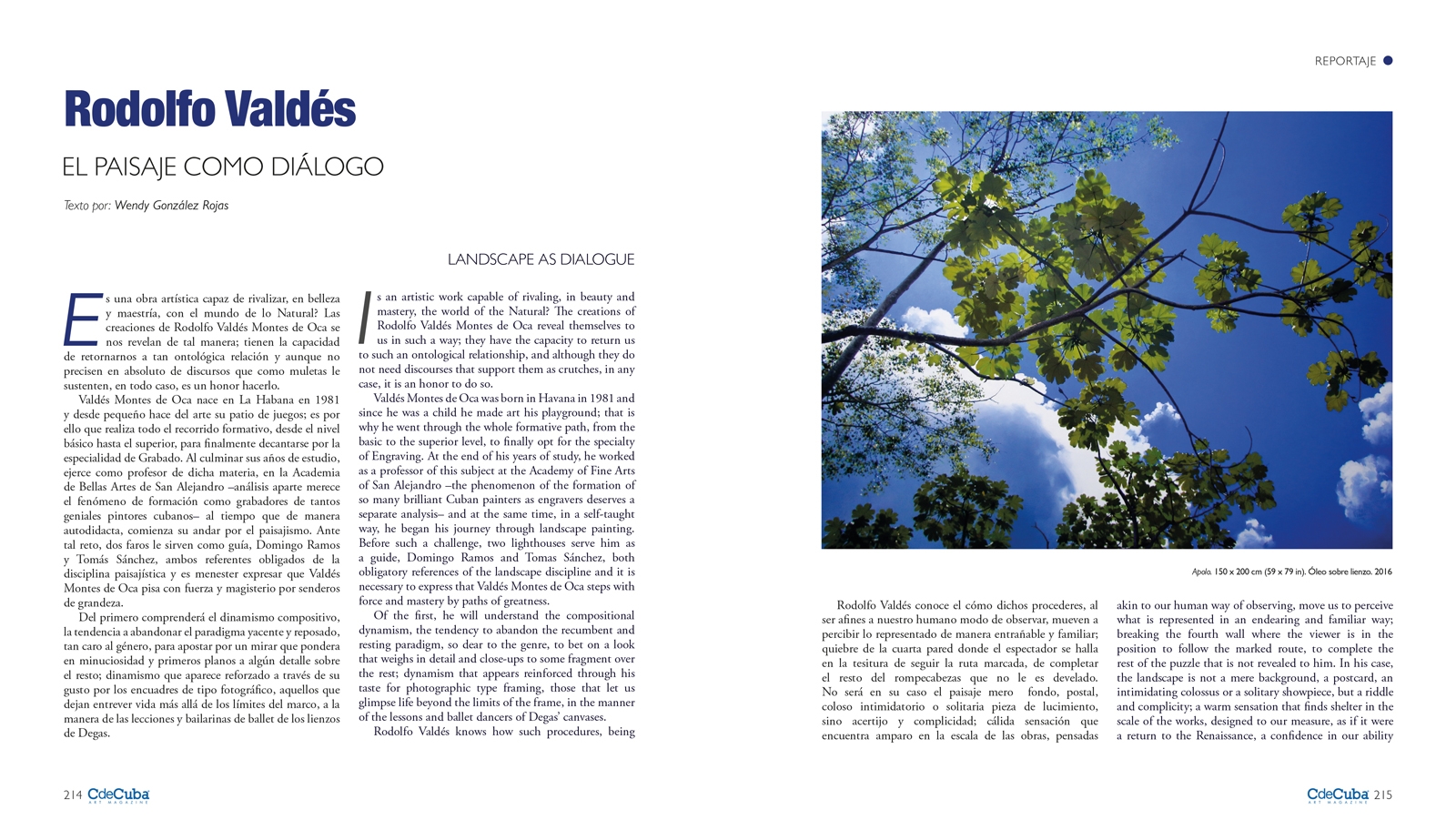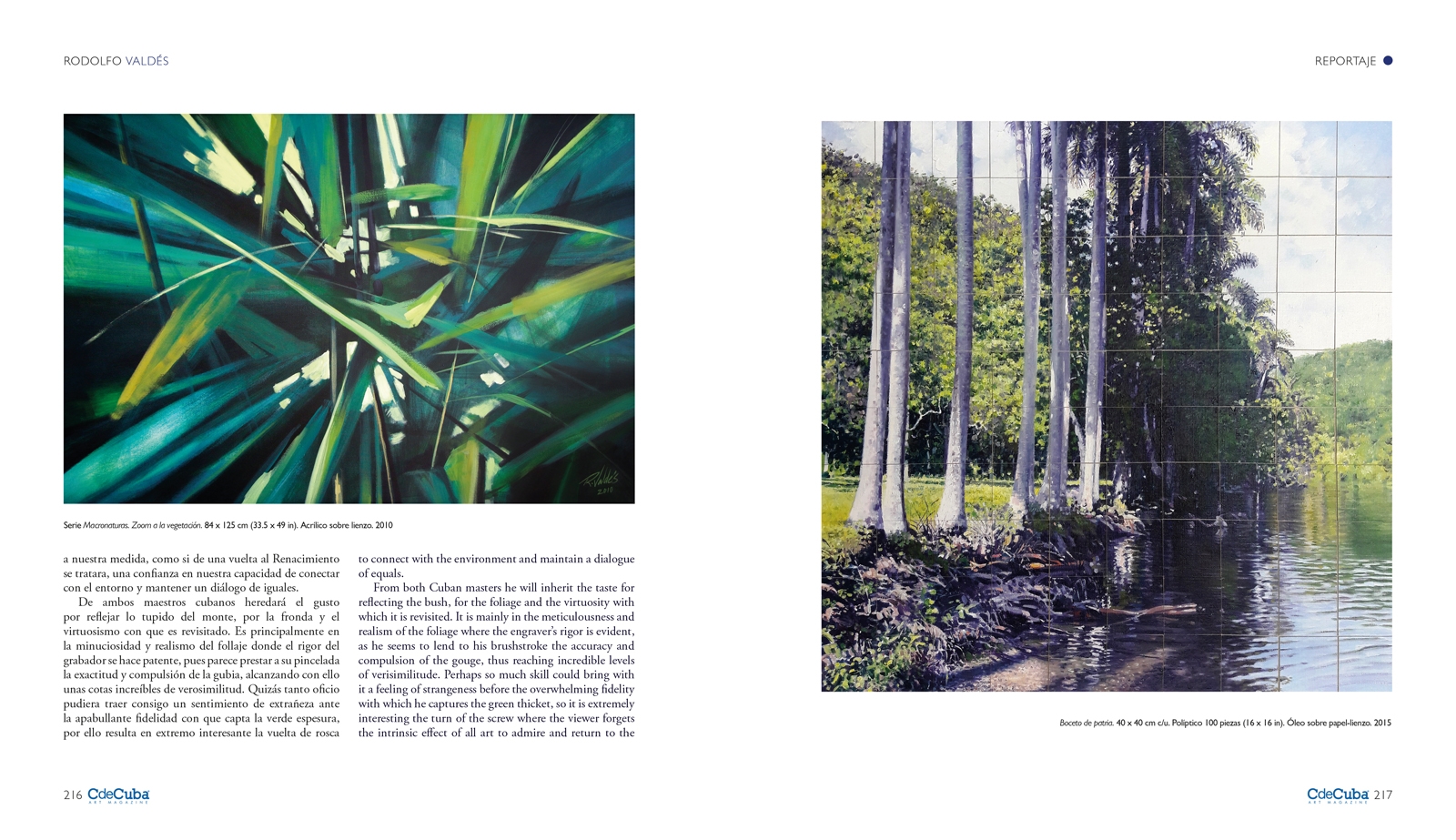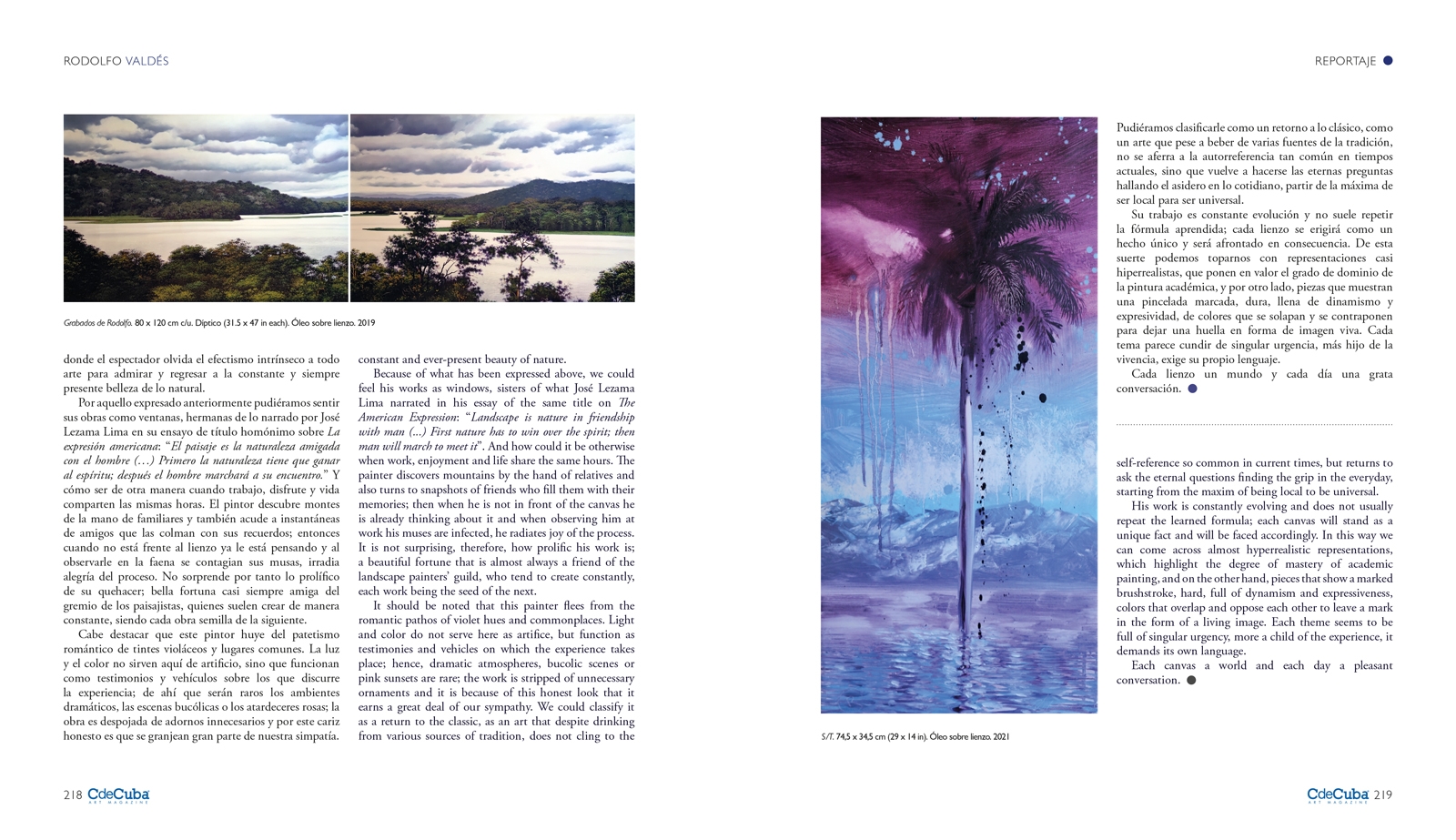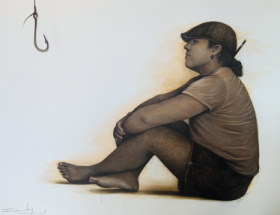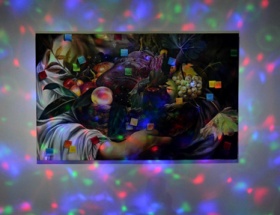Landscape as Dialogue
By Wendy González Rojas
Is an artistic work capable of rivaling, in beauty and mastery, the world of the Natural? The creations of Rodolfo Valdés Montes de Oca reveal themselves to us in such a way; they have the capacity to return us to such an ontological relationship, and although they do not need discourses that support them as crutches, in any case, it is an honor to do so.
Valdés Montes de Oca was born in Havana in 1981 and since he was a child he made art his playground; that is why he went through the whole formative path, from the basic to the superior level, to finally opt for the specialty of Engraving. At the end of his years of study, he worked as a professor of this subject at the Academy of Fine Arts of San Alejandro –the phenomenon of the formation of so many brilliant Cuban painters as engravers deserves a separate analysis– and at the same time, in a self-taught way, he began his journey through landscape painting. Before such a challenge, two lighthouses serve him as a guide, Domingo Ramos and Tomas Sánchez, both obligatory references of the landscape discipline and it is necessary to express that Valdés Montes de Oca steps with force and mastery by paths of greatness.
Of the first, he will understand the compositional dynamism, the tendency to abandon the recumbent and resting paradigm, so dear to the genre, to bet on a look that weighs in detail and close-ups to some fragment over the rest; dynamism that appears reinforced through his taste for photographic type framing, those that let us glimpse life beyond the limits of the frame, in the manner of the lessons and ballet dancers of Degas’ canvases.
Rodolfo Valdés knows how such procedures, being akin to our human way of observing, move us to perceive what is represented in an endearing and familiar way; breaking the fourth wall where the viewer is in the position to follow the marked route, to complete the rest of the puzzle that is not revealed to him. In his case, the landscape is not a mere background, a postcard, an intimidating colossus or a solitary showpiece, but a riddle and complicity; a warm sensation that finds shelter in the scale of the works, designed to our measure, as if it were a return to the Renaissance, a confidence in our ability to connect with the environment and maintain a dialogue of equals.
From both Cuban masters he will inherit the taste for reflecting the bush, for the foliage and the virtuosity with which it is revisited. It is mainly in the meticulousness and realism of the foliage where the engraver’s rigor is evident, as he seems to lend to his brushstroke the accuracy and compulsion of the gouge, thus reaching incredible levels of verisimilitude. Perhaps so much skill could bring with it a feeling of strangeness before the overwhelming fidelity with which he captures the green thicket, so it is extremely interesting the turn of the screw where the viewer forgets the intrinsic effect of all art to admire and return to the constant and ever-present beauty of nature.
Because of what has been expressed above, we could feel his works as windows, sisters of what José Lezama Lima narrated in his essay of the same title on The American Expression: “Landscape is nature in friendship with man (…) First nature has to win over the spirit; then man will march to meet it”. And how could it be otherwise when work, enjoyment and life share the same hours. The painter discovers mountains by the hand of relatives and also turns to snapshots of friends who fill them with their memories; then when he is not in front of the canvas he is already thinking about it and when observing him at work his muses are infected, he radiates joy of the process. It is not surprising, therefore, how prolific his work is; a beautiful fortune that is almost always a friend of the landscape painters’ guild, who tend to create constantly, each work being the seed of the next.
It should be noted that this painter flees from the romantic pathos of violet hues and commonplaces. Light and color do not serve here as artifice, but function as testimonies and vehicles on which the experience takes place; hence, dramatic atmospheres, bucolic scenes or pink sunsets are rare; the work is stripped of unnecessary ornaments and it is because of this honest look that it earns a great deal of our sympathy. We could classify it as a return to the classic, as an art that despite drinking from various sources of tradition, does not cling to the self-reference so common in current times, but returns to ask the eternal questions finding the grip in the everyday, starting from the maxim of being local to be universal.
His work is constantly evolving and does not usually repeat the learned formula; each canvas will stand as a unique fact and will be faced accordingly. In this way we can come across almost hyperrealistic representations, which highlight the degree of mastery of academic painting, and on the other hand, pieces that show a marked brushstroke, hard, full of dynamism and expressiveness, colors that overlap and oppose each other to leave a mark in the form of a living image. Each theme seems to be full of singular urgency, more a child of the experience, it demands its own language.
Each canvas a world and each day a pleasant conversation.
